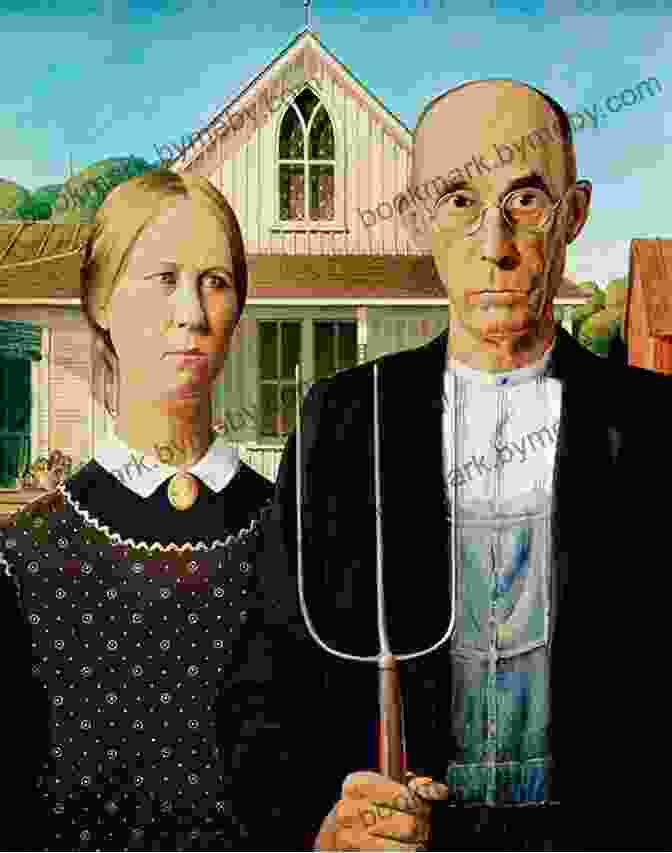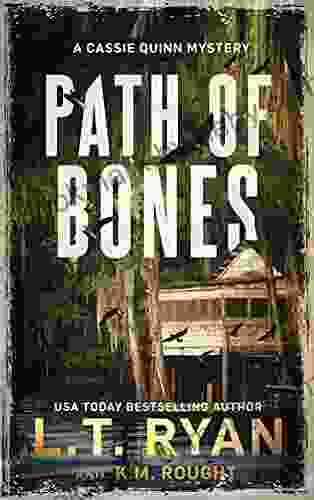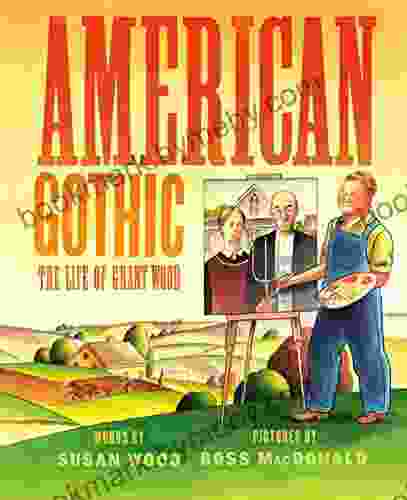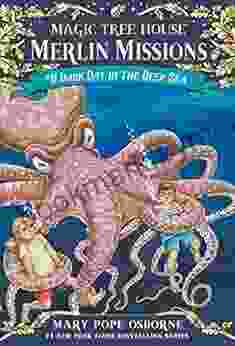Unveiling the Enigma of American Gothic: The Life of Grant Wood

4.4 out of 5
| Language | : | English |
| File size | : | 57823 KB |
| Screen Reader | : | Supported |
| Print length | : | 40 pages |
| Lending | : | Enabled |
Grant Wood, the enigmatic artist behind the iconic masterpiece, 'American Gothic,' is a figure steeped in mystery and controversy. His life and work offer a fascinating glimpse into the complexities of American art and culture in the early 20th century.
Early Life and Artistic Influences
Wood was born in 1891 in Anamosa, Iowa, a small farming community that would forever shape his artistic perspective. From an early age, he displayed a keen interest in art, drawing inspiration from the landscape and people around him. His formal art education began at the Minneapolis School of Art, where he came under the influence of Robert Henri, a prominent American realist painter.
After graduating, Wood traveled to Paris, where he was exposed to the avant-garde art movements of the time. However, instead of embracing these modern styles, Wood's artistic sensibilities were drawn to the Northern Renaissance masters, particularly Jan van Eyck. He admired their meticulous attention to detail and the symbolic richness of their paintings.
The Genesis of 'American Gothic'
Upon returning to Iowa in 1928, Wood became fascinated by the Gothic Revival architecture prevalent in the Midwest. The pointed arches, steep gables, and intricate woodwork resonated with his appreciation for the Northern Renaissance style. It was during this time that he sketched the first ideas for 'American Gothic.'
The models for the painting were Wood's sister, Nan, and their dentist, Dr. Byron McKeeby. Wood posed them in front of the Dibble House, a Gothic Revival farmhouse in Eldon, Iowa. The result is a haunting and enigmatic image that has become an enduring symbol of American art.
Symbolism and Interpretation
'American Gothic' has been the subject of countless interpretations over the years. The stiff and unyielding expressions of the subjects, the rigid lines of the house, and the ominous pitchfork have led to speculation about the painting's meaning and message. Some believe it is a satire of Midwestern conservatism, while others see it as a reflection of the isolation and alienation felt by rural Americans during the Great Depression.
Wood himself remained enigmatic about the painting's symbolism, saying, "If I had told you what it meant, I would have had no picture." However, he did provide some clues, suggesting that the painting was an "affirmation of the dignity of the rural American farmer" and a commentary on the "decade of spiritual depression" that had gripped the nation during the 1930s.
Other Notable Works
While 'American Gothic' is Wood's most famous work, he produced numerous other significant pieces throughout his career. These include:
- Daughters of Revolution (1932): A portrait of three elderly women in a patriotic setting, exploring themes of aging and nostalgia.
- Arbor Day (1932): A celebration of the American landscape and its connection to rural life.
- Stone City, Iowa (1930): A panoramic view of a small Midwestern town, capturing the essence of American regionalism.
- Roll Call (1935): A powerful depiction of World War I veterans, highlighting the human cost of war.
Legacy and Impact
Grant Wood's unique and distinctly American vision has left an enduring mark on the art world. His paintings are celebrated for their technical mastery, their symbolic depth, and their ability to capture the essence of Midwestern life.
American Gothic remains one of the most iconic works of American art. Its enduring popularity is a testament to Wood's skill as a painter and his uncanny ability to tap into the complexities of American culture.
Wood's legacy extends beyond his own artistic achievements. He was a founding member of the Regionalist movement, which emphasized the importance of depicting local and regional themes in art. His work has inspired generations of American artists, proving that great art can emerge from even the most humble of origins.

Grant Wood, 'American Gothic,' 1930. Oil on beaverboard. Art Institute of Chicago.
4.4 out of 5
| Language | : | English |
| File size | : | 57823 KB |
| Screen Reader | : | Supported |
| Print length | : | 40 pages |
| Lending | : | Enabled |
Do you want to contribute by writing guest posts on this blog?
Please contact us and send us a resume of previous articles that you have written.
 Book
Book Novel
Novel Page
Page Chapter
Chapter Text
Text Story
Story Genre
Genre Reader
Reader Library
Library Paperback
Paperback E-book
E-book Magazine
Magazine Newspaper
Newspaper Paragraph
Paragraph Sentence
Sentence Bookmark
Bookmark Shelf
Shelf Glossary
Glossary Bibliography
Bibliography Foreword
Foreword Preface
Preface Synopsis
Synopsis Annotation
Annotation Footnote
Footnote Manuscript
Manuscript Scroll
Scroll Codex
Codex Tome
Tome Bestseller
Bestseller Classics
Classics Library card
Library card Narrative
Narrative Biography
Biography Autobiography
Autobiography Memoir
Memoir Reference
Reference Encyclopedia
Encyclopedia Tom Hopkins
Tom Hopkins William Rothman
William Rothman Jacqueline Langwith
Jacqueline Langwith Kenneth Rideout
Kenneth Rideout Jonti Marks
Jonti Marks Richard J Foster
Richard J Foster Joel Enos
Joel Enos Samir P Desai
Samir P Desai J Michael Veron
J Michael Veron Jacob Goldstein
Jacob Goldstein Susy Callory
Susy Callory J G Heck
J G Heck Lizzy Rockwell
Lizzy Rockwell Jerry Shepard
Jerry Shepard Jill Braden
Jill Braden Jackson Pearce
Jackson Pearce Roger Gordon
Roger Gordon Jacob Stegenga
Jacob Stegenga Jacqueline Kinney Johnson
Jacqueline Kinney Johnson Jean Georges Vongerichten
Jean Georges Vongerichten
Light bulbAdvertise smarter! Our strategic ad space ensures maximum exposure. Reserve your spot today!

 Caleb CarterTime Travel in Einstein's Universe: Unraveling the Mysteries of Space, Time,...
Caleb CarterTime Travel in Einstein's Universe: Unraveling the Mysteries of Space, Time,... Julian PowellFollow ·11.5k
Julian PowellFollow ·11.5k Melvin BlairFollow ·15.5k
Melvin BlairFollow ·15.5k Al FosterFollow ·10.7k
Al FosterFollow ·10.7k Austin FordFollow ·7.6k
Austin FordFollow ·7.6k Harold BlairFollow ·16.3k
Harold BlairFollow ·16.3k Donovan CarterFollow ·6.3k
Donovan CarterFollow ·6.3k Clinton ReedFollow ·18.6k
Clinton ReedFollow ·18.6k Rick NelsonFollow ·12.7k
Rick NelsonFollow ·12.7k

 Phil Foster
Phil FosterThe Unforgettable Easter: Ramona's Journey of Discovery...
Embark on Ramona's Extraordinary Easter...

 Levi Powell
Levi PowellThe Old City and Mount of Olives: A Journey Through...
Jerusalem, a city etched into the annals of...

 Henry Hayes
Henry HayesThe Clearances: A Journey Through Scotland's Hidden...
In the 18th and 19th...

 Edward Reed
Edward ReedUnravel the Enigmatic 'Path of Bones' with Cassie Quinn...
Step into the...
4.4 out of 5
| Language | : | English |
| File size | : | 57823 KB |
| Screen Reader | : | Supported |
| Print length | : | 40 pages |
| Lending | : | Enabled |













